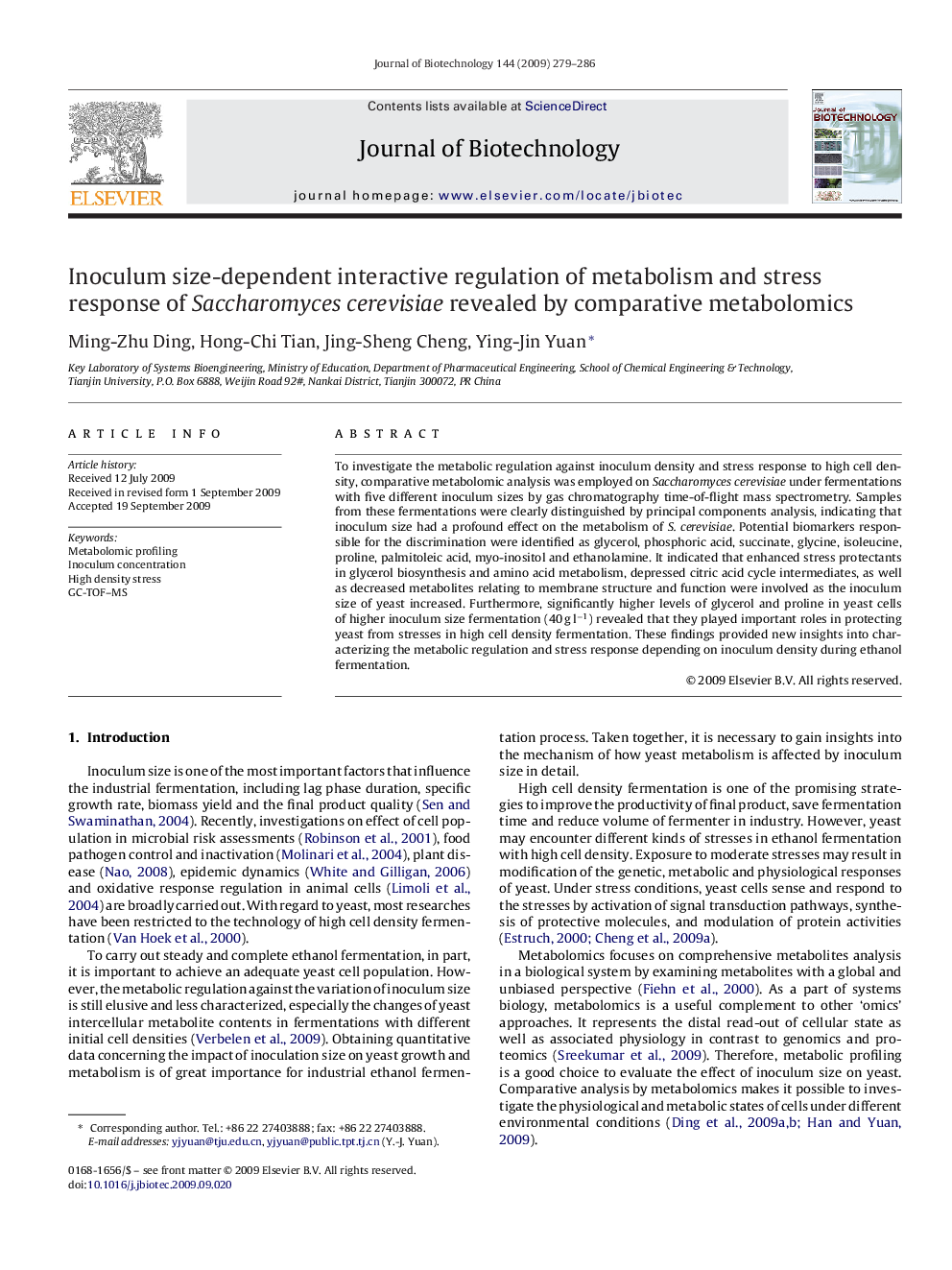| Article ID | Journal | Published Year | Pages | File Type |
|---|---|---|---|---|
| 24409 | Journal of Biotechnology | 2009 | 8 Pages |
To investigate the metabolic regulation against inoculum density and stress response to high cell density, comparative metabolomic analysis was employed on Saccharomyces cerevisiae under fermentations with five different inoculum sizes by gas chromatography time-of-flight mass spectrometry. Samples from these fermentations were clearly distinguished by principal components analysis, indicating that inoculum size had a profound effect on the metabolism of S. cerevisiae. Potential biomarkers responsible for the discrimination were identified as glycerol, phosphoric acid, succinate, glycine, isoleucine, proline, palmitoleic acid, myo-inositol and ethanolamine. It indicated that enhanced stress protectants in glycerol biosynthesis and amino acid metabolism, depressed citric acid cycle intermediates, as well as decreased metabolites relating to membrane structure and function were involved as the inoculum size of yeast increased. Furthermore, significantly higher levels of glycerol and proline in yeast cells of higher inoculum size fermentation (40 g l−1) revealed that they played important roles in protecting yeast from stresses in high cell density fermentation. These findings provided new insights into characterizing the metabolic regulation and stress response depending on inoculum density during ethanol fermentation.
